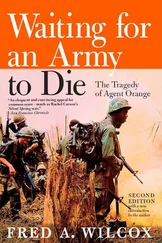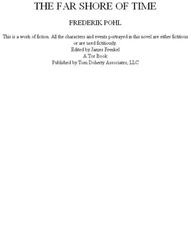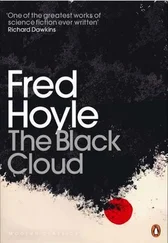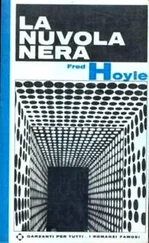“I don’t think so.”
“I’ve gone as far as I want. Further, in fact, to show I could deliver the goods. But for me the road ends here.”
Reinhart opened his mouth to speak, but Fleming turned away.
“All right,” Reinhart said. “Will you tackle it, Madeleine?”
They made the rest of the arrangements when Fleming had gone.
Dawnay moved in the following week and set to work on the computer, with Bridger and Christine helping her and Geers now full of enthusiasm and attention. Fleming returned to London and Judy saw nothing of him; being a serving officer tied by oath, she had to stay where she was ordered. In a way it was a relief to be free of their equivocal relationship. After their one night in his chalet she had kept him, as far as possible, at arm’s length, for she was torn between the instinct of being in love and the feeling that she did not want him to take her for something other than she was. At least while he was away she did not have to report on him—only on Bridger, and that she minded less.
Bridger gave no clue to any of them. Judy kept away from the moor and Quadring’s patrols found nothing. Bridger himself grew steadily more miserable and withdrawn. He worked competently but without enthusiasm, spending his spare time watching the late migrations from the Thorholm nestings.
Autumn darkened into winter. Back in London, Fleming settled down to check the entire message and all his original calculations. Monitoring of the signal went on from Bouldershaw Fell, but it was now only routine. The code was always the same; Fleming could find nothing in all his workings to give him a line on what he feared.
At Thorness Dawnay made better progress.
“The boy was right about one thing,” she told Reinhart. “The question and answer business. We fed in the carbon atom figures and immediately it began to print out stuff on the structure of protein molecules.”
When she fed that back, it started asking more questions. It offered the formulas of a variety of different structures based on proteins, and it clearly wanted to be given more information about them. Dawnay set her department at Edinburgh to work. Between them they put back into the machine everything they knew about cell formation. By the New Year it had given them the molecular structure of haemoglobin.
“Why haemoglobin?” asked Judy, who had followed her to Edinburgh in an attempt to understand what was happening.
“The haemoglobin in the blood carries the electricity supply to your brain.”
“He offered you that as one of a set of alternatives?” Reinhart asked. They had all three met in Dawnay’s study in one of the old grey university buildings because she had told them she wanted a Ministry decision.
“Yes,” she said. “As before. And we fed that one back.”
“So now it knows what our brains run on.”
“It knows a great deal more than that by now.”
Reinhart stroked his chin with his little fingers.
“Why does it want to?”
“You’re under Fleming’s influence, aren’t you?” Dawnay said reprovingly. “It doesn’t ‘want to know’ anything. It calculates logical responses from information which we give it, and from what it already possesses. Because it’s a calculating machine.”
“Is that all?” Judy, from what little she knew, shared Reinhart’s doubts.
“Let’s try to be scientific about it, shall we?” Dawnay said. “Not mystical.”
“Professor Reinhart, do you... ?”
Reinhart looked uncomfortable. “Fleming would say it wants to know what sort of intelligence it’s up against—what sort of computers we are, how big our brains are, how we feed them, what sort of beings we house them in.”
“Young Fleming’s emotionally disturbed, if you ask me,” said Dawnay. She waved her hand towards shelves piled with folders of paper. “We’ve got so much now we can hardly see daylight, but I’ve an idea what it’s all about, which is why I wanted you. I think it’s given us the basic plan of a living cell.”
“A what?”
“Not that it’s any good to us. We have this huge amount of numbers. It’s far too complex for us ever to understand fully.”
“Why should it be?”
“Look at the size of it! We can recognise odd bits—odd bits of chromosome structure and so on—but it would take years to analyse it all.”
“If that’s what you’re meant to do.”
“What do you mean?”
Reinhart stroked his chin again. His fingers, Judy noticed, had little dimples on them. There was something very comforting and humane about him, even when he was out of his depth in theory.
“I want to talk to Fleming and Osborne,” he said.
He got them together, eventually, in Osborne’s office. By that time he had all the facts at his fingertips and he wanted action. Fleming looked older and slack, as though the elastic inside him had run down. His face was pouchy and his eyes bloodshot.
Osborne sat back elegantly and listened to Reinhart.
“Professor Dawnay’s come up with what appears to be the detailed chromosome structure of a cell.”
“A living cell?”
“Yes. It’s something we’ve never known before: the order in which the nucleic acid molecules are arranged.”
“So you could actually build one up?”
“If we can use the computer as a control, and if we can make a chemical device to act on the instructions as they come up—in fact, if we can make a D.N.A. synthesiser—then I think we can begin to build living tissue.”
“That’s what the biologists have been after for years, isn’t it?”
“You really want to let it make a living organism?” Fleming asked.
“Dawnay wants to try,” said Reinhart. “Fleming doesn’t. What do we do?”
“Why don’t you?” Osborne asked Fleming quite casually, as though it was a matter of passing interest.
“Because we’re being pushed into this by a form of compulsion,” said Fleming wearily. “I’ve been saying that ever since the day we built the damn thing, and I can find nothing to make me think otherwise. Madeleine Dawnay imagines you can just use it as a piece of lab equipment: she’s a cheerful optimist. If she wants to play with D.N.A. synthesis, let her stay in her university and do it. Don’t let her use the computer. Or, if you must, at least wipe the memory first.”
“Reinhart?” Osborne turned languidly to the Professor. Whatever impression Fleming had made on him did not show.
“I don’t know,” said Reinhart. “I simply don’t know. It comes from an alien intelligence, but—”
“’We can always pull out the plug’?” Fleming quoted for him. “Look, we built it to prove the content of the message. Right? Well, we’ve done that. We operated it to discover its purpose. Now we know that too.”
“Do we?”
“I do! It’s an intellectual fifth column from another world—from another form of existence. It’s got the seeds of life in it, and also the seeds of destruction.”
“Have you any grounds at all for saying that?” asked Osborne.
“No tangible grounds.”
“Then how can we—?”
“All right, go on!” Fleming heaved himself up and made for the door. “Go on and see what happens—but don’t come crying to me!”
For all that, he went to Thorness in the spring—he said, to visit Judy, but in fact from morbid curiosity. He kept away from the computer block but Judy and Bridger, separately, told him what was happening. A new bay added to the building was filled by Dawnay with elaborate laboratory equipment, including a chemical synthesiser and an electron microscope. As well as Christine, she had several postgraduate students of her own at work on the project, and all the money she could reasonably need. Reinhart and Osborne between them had got substantial backing.
Читать дальше












